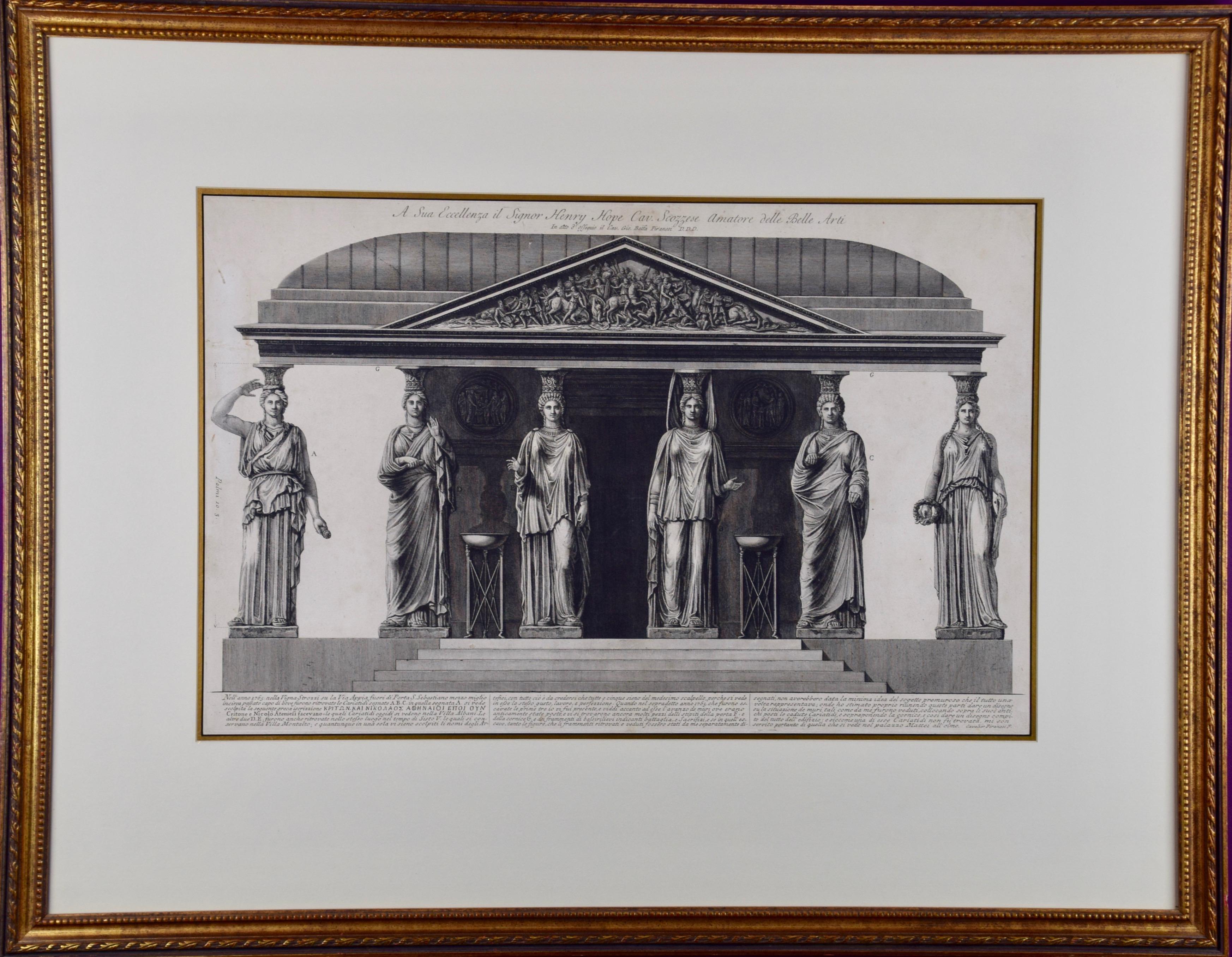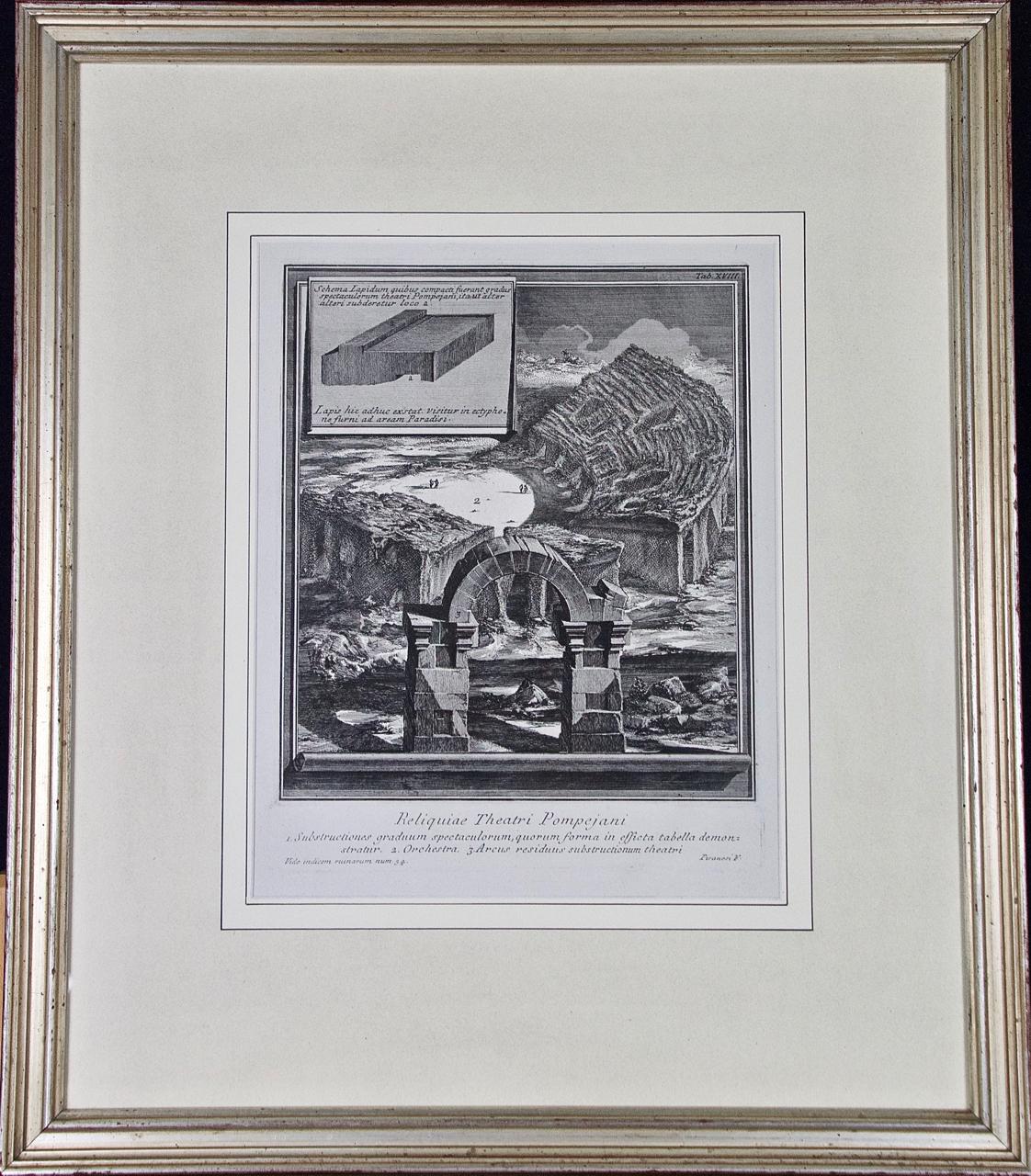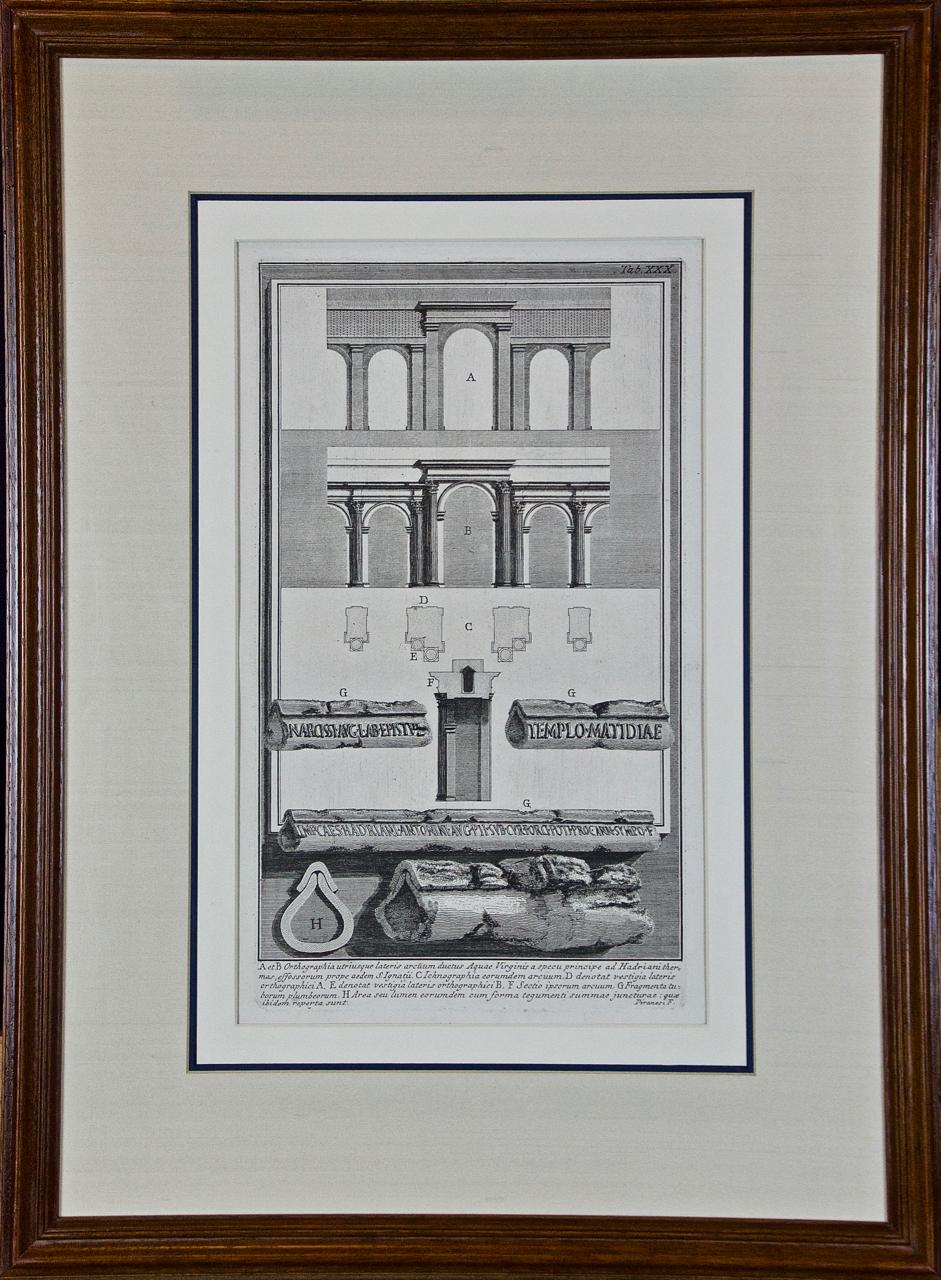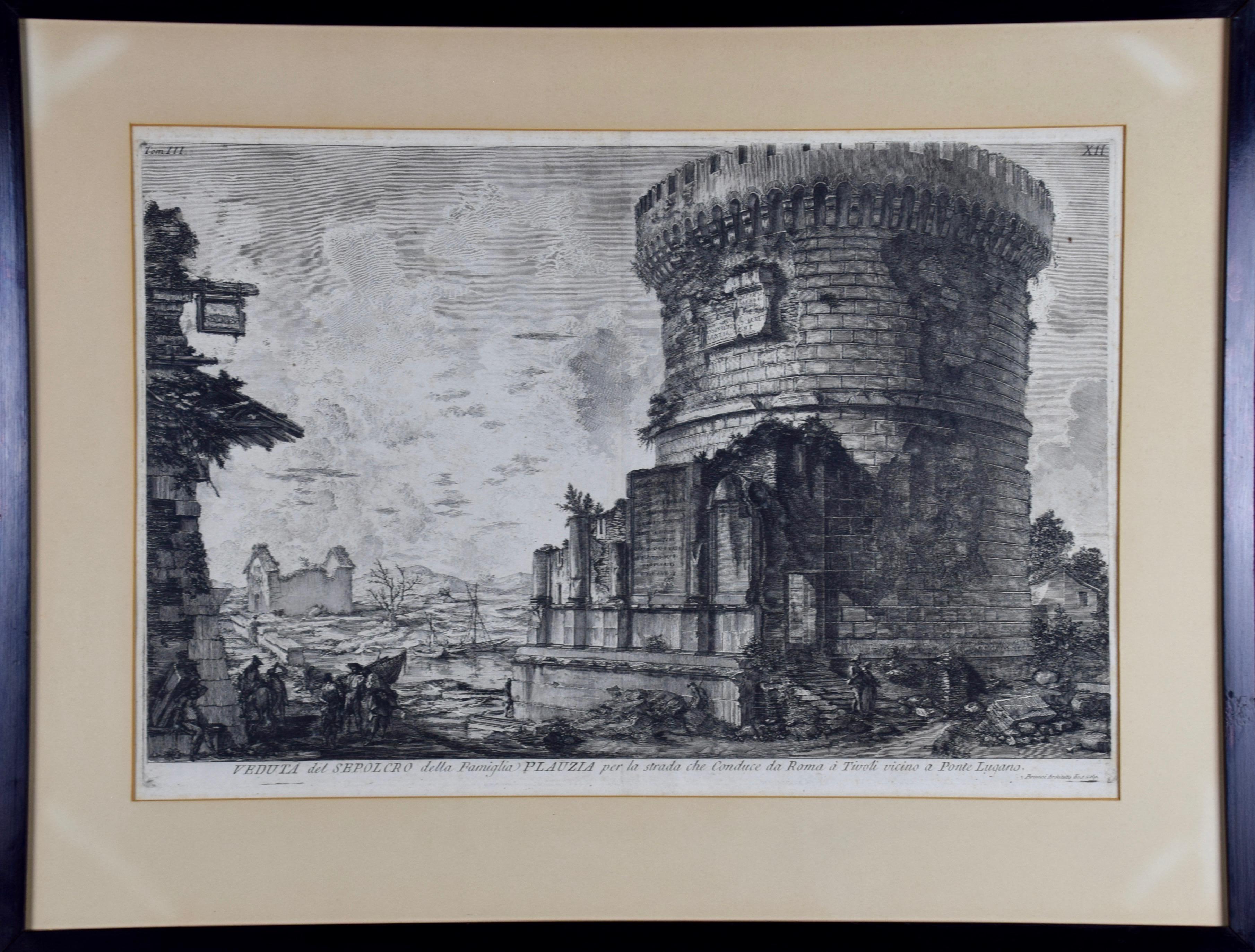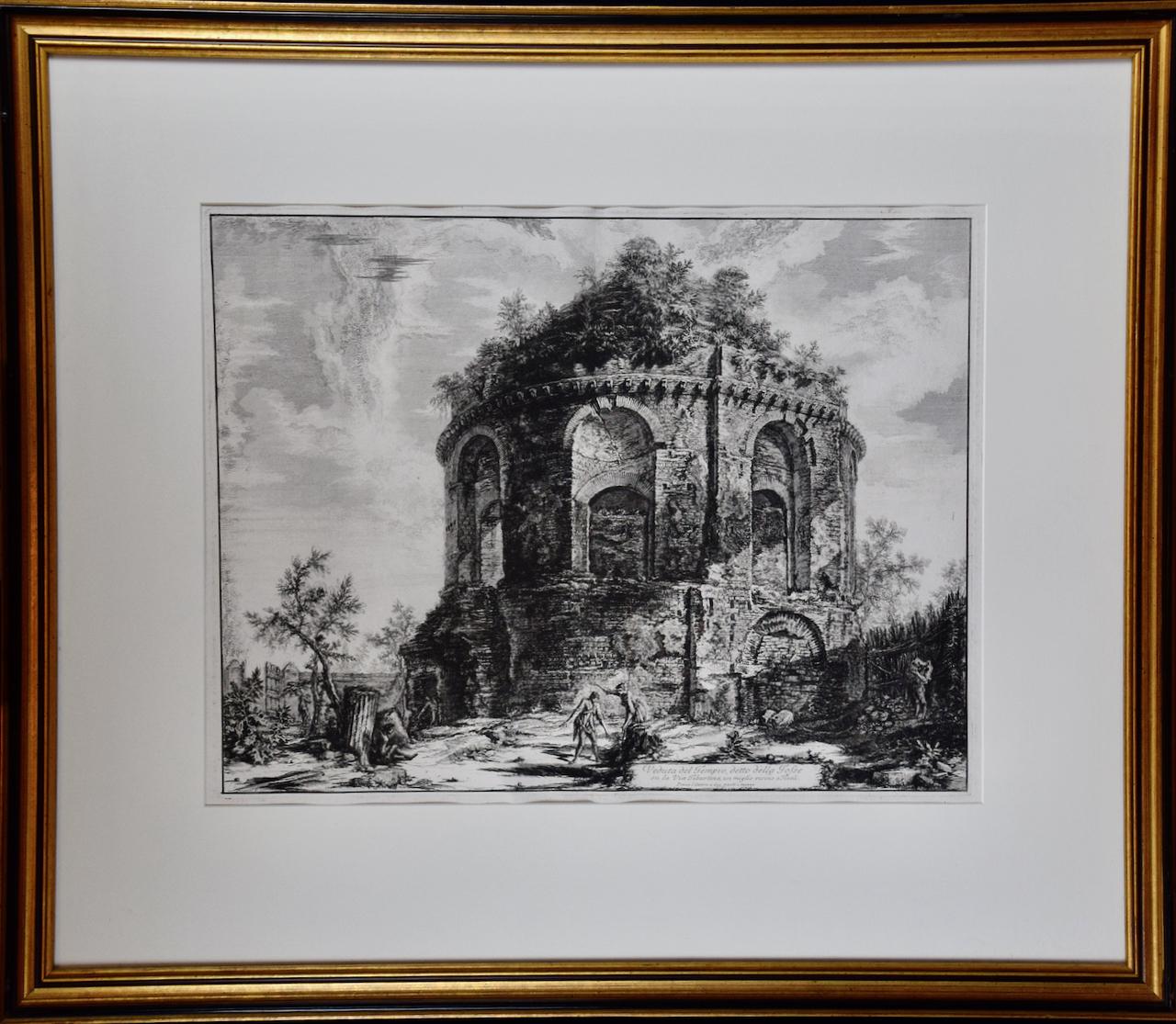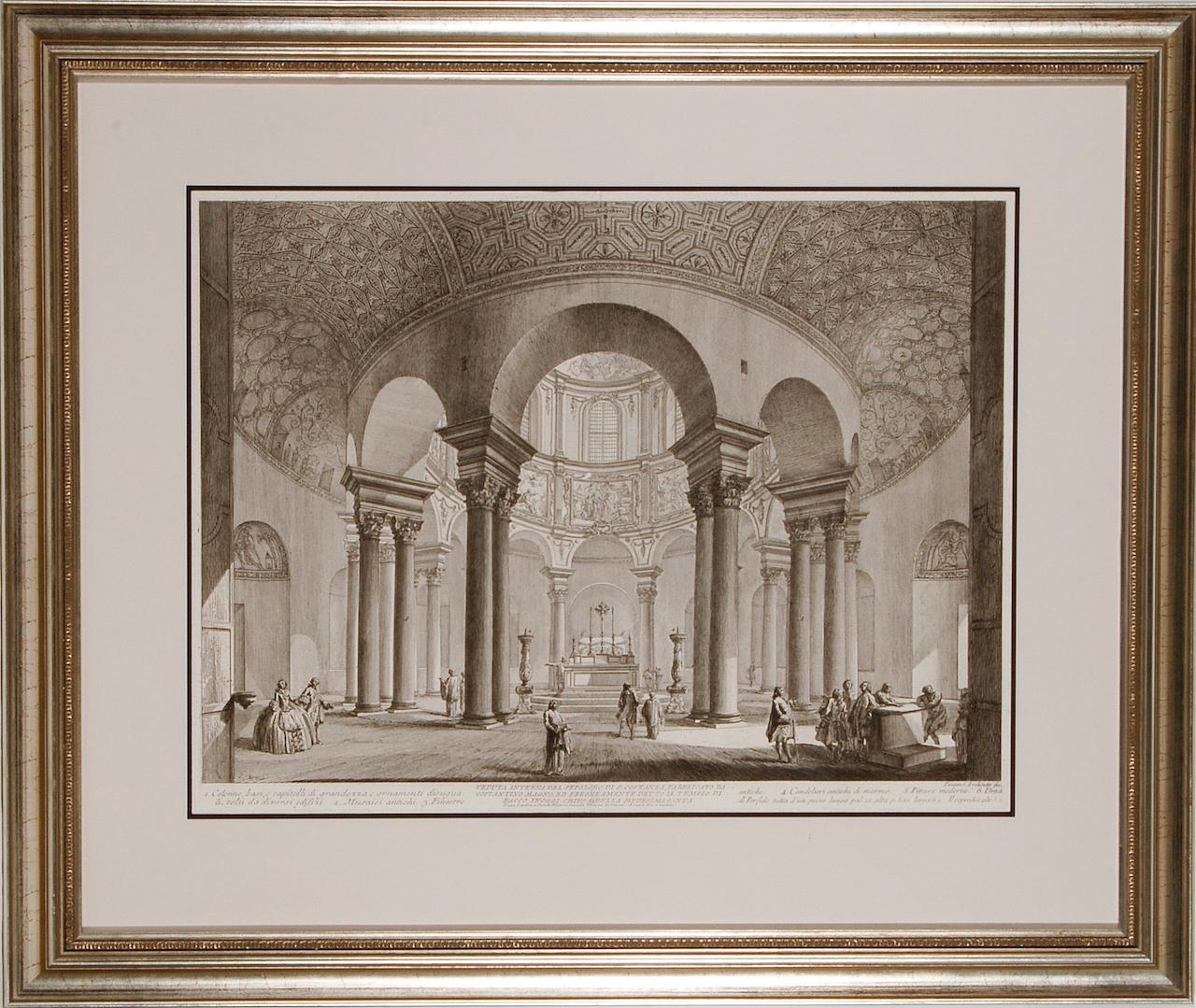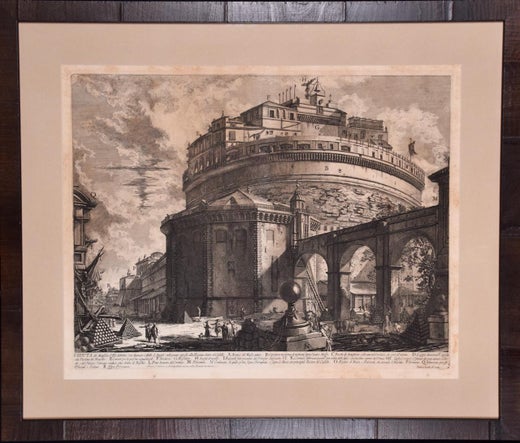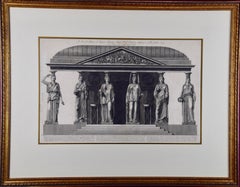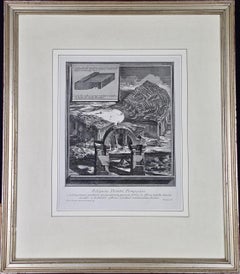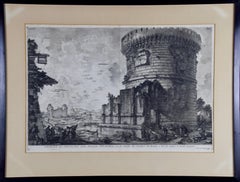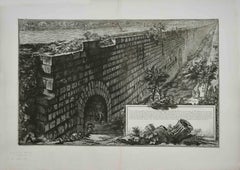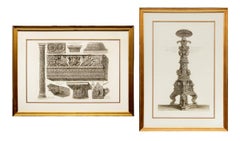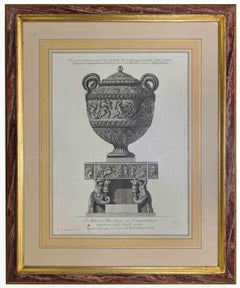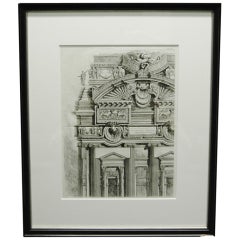Items Similar to 18th Century Etching of Ancient Roman Architectural Objects by Giovanni Piranesi
Want more images or videos?
Request additional images or videos from the seller
1 of 9
Giovanni Battista Piranesi18th Century Etching of Ancient Roman Architectural Objects by Giovanni Piranesi1778
1778
$1,975
£1,477.73
€1,715.03
CA$2,749.94
A$3,093.08
CHF 1,604.31
MX$37,521.28
NOK 20,341.72
SEK 19,142.70
DKK 12,794.60
Shipping
Retrieving quote...The 1stDibs Promise:
Authenticity Guarantee,
Money-Back Guarantee,
24-Hour Cancellation
About the Item
A. Tigna Protensa Super Media Epistylia, B. Praecisiones Tigorum Quaqua Versus Extrinsectus Apparentium, C. Opae Extremitates Tigorum Contintes, Fig. I, plate 88 from "Vasi, Candelabri, Cippi, Sarcofagi, Tripodi, Lucerne, Ed Ornamenti Antichi", (Vases, candelabra, grave stones, sarcophagi, tripods, lamps, and ancient ornaments). This work by Giovanni Battista Piranesi, published in 1778, depicts a column, a frieze and other architectural elements.
The print is presented in an antiqued silver-color wood frame and an off-white and white French mat. The frame measures 25.63" high, 19.13" wide and 1.25" deep. The print is in excellent condition.
Piranesi was born in Venice in 1720 and died in Rome in 1778. He was the son of a stone mason and was trained as an architect. After a slow start he eventually achieved great success as an architect, archaeologist, artist, designer, collector, and antiquities dealer. His mission was to glorify the architecture of ancient Rome through his engravings and etchings. His highly dramatized prints often depict imaginary interiors and frequently include figures in mysterious activities, who are dwarfed by the magnitude of their monumental surroundings.
Piranesi's style greatly influenced the neoclassical art movement of the late 18th century. His dramatic scenes inspired generations of set designers, as well as artists, architects and writers. His prints have continued to increase in value to institutions and collectors.
- Creator:Giovanni Battista Piranesi (1720-1778, Italian)
- Creation Year:1778
- Dimensions:Height: 25.63 in (65.11 cm)Width: 19.13 in (48.6 cm)Depth: 1.25 in (3.18 cm)
- Medium:
- Movement & Style:
- Period:
- Condition:
- Gallery Location:Alamo, CA
- Reference Number:Seller: #38721stDibs: LU117324345541
Giovanni Battista Piranesi
Piranesi was born in Venice in 1720 and died in Rome in 1778. He was the son of a stone mason and was trained as an architect. After a slow start he eventually achieved great success as an architect, archaeologist, artist, designer, collector, and antiquities dealer. His mission was to glorify the architecture of ancient Rome through his engravings and etchings. His highly dramatized prints often depict imaginary interiors and frequently include figures in mysterious activities, who are dwarfed by the magnitude of their monumental surroundings. Piranesi's style greatly influenced the neoclassical art movement of the late 18th century. His dramatic scenes inspired generations of set designers, as well as artists, architects and writers. His prints have continued to increase in value to institutions and collectors.
About the Seller
5.0
Platinum Seller
Premium sellers with a 4.7+ rating and 24-hour response times
Established in 2011
1stDibs seller since 2019
285 sales on 1stDibs
Typical response time: 2 hours
- ShippingRetrieving quote...Shipping from: Alamo, CA
- Return Policy
Authenticity Guarantee
In the unlikely event there’s an issue with an item’s authenticity, contact us within 1 year for a full refund. DetailsMoney-Back Guarantee
If your item is not as described, is damaged in transit, or does not arrive, contact us within 7 days for a full refund. Details24-Hour Cancellation
You have a 24-hour grace period in which to reconsider your purchase, with no questions asked.Vetted Professional Sellers
Our world-class sellers must adhere to strict standards for service and quality, maintaining the integrity of our listings.Price-Match Guarantee
If you find that a seller listed the same item for a lower price elsewhere, we’ll match it.Trusted Global Delivery
Our best-in-class carrier network provides specialized shipping options worldwide, including custom delivery.More From This Seller
View AllAncient Roman Architecture: Framed Original 18th C. Etching by G. Piranesi
By Giovanni Battista Piranesi
Located in Alamo, CA
"A sua Eccellenza il Signor Henry Hope Cav. Scozzese Amatore delle Belle Arti from "Vasi, Candelabri, Cippi, Sarcofagi, Tripodi, Lucerne, Ed Ornamenti Antichi", (Vases, candelabra, grave stones, sarcophagi, tripods, lamps, and ancient ornaments) is an etching by Giovanni Battista Piranesi, published in 1778. It depicts stone caryatids...
Category
1770s Old Masters Figurative Prints
Materials
Etching
Piranesi 18th C. Etching "Reliquiae Theartri Pompejani" an Ancient Roman Theater
By Giovanni Battista Piranesi
Located in Alamo, CA
This a framed Giovanni Battista Piranesi (1720-1778) etching entitled "Reliquiae Theartri Pompejani" (Remains of the Theatre of Pompey) from "Il Campo Marzio dell'Antica Roma" (The Campus Martius of Ancient Rome), published in Rome in 1762. It depicts the remains of an ancient theater in Rome with exposed seating and an arch still standing in the foreground. An inset shows an architectural side view of a portion of the structure.
The etching is presented in an antiqued silver-colored wood frame with a cream-colored French mat. The frame measures 24" x 20.75" x 1.25". The print is in excellent condition.
The Theatre of Pompey (Latin: Theatrum Pompeii, Italian: Teatro di Pompeo) was a structure in Ancient Rome built during the latter part of the Roman Republican era by Pompey the Great...
Category
Mid-18th Century Old Masters Landscape Prints
Materials
Etching
Piranesi Etching of Hadrian's Ancient Roman Aqueduct and Baths, "Aquae Virginis"
By Giovanni Battista Piranesi
Located in Alamo, CA
This is a framed Giovanni Battista Piranesi (1720-1778) etching entitled "Orthographia utriusque lateris arcuum ductus Aquae Virginis a specu principe ad Hadriani thermas, effossorum...
Category
Mid-18th Century Old Masters Landscape Prints
Materials
Etching
Ancient Roman Architecture: Original Framed 18th C. Etching by G. Piranesi
By Giovanni Battista Piranesi
Located in Alamo, CA
"Veduta del Sepolcro della Famiglia Plauzia per la Strada Che Conduce da Roma a Tivoli vicino a Ponte Lugano" from "Le Antichità Romane" (Roman Antiquities), one of the most famous works by Piranesi. "Antichita" illustrates the tombs along the Appian Way...
Category
Early 18th Century Old Masters Figurative Prints
Materials
Etching, Engraving, Drypoint
Ancient Roman Temple Architecture: An 18th Century Framed Etching by Piranesi
By Giovanni Battista Piranesi
Located in Alamo, CA
This is an 18th century etching by Giovanni Battista Piranesi entitled "Veduta del Tempio detto della Tosse su la Via Tiburtina, un miglio vicino a Tivoli" (View of the so-called Tem...
Category
1760s Old Masters Figurative Prints
Materials
Etching
Church of St. Costanza, Rome: An 18th Century Piranesi Architectural Etching
By Giovanni Battista Piranesi
Located in Alamo, CA
This is a framed 18th century Giovanni Battista Piranesi etching entitled: "Veduta interna del Sepocro di Santa Costanza, fabbricat...
Category
1770s Old Masters Interior Prints
Materials
Etching
You May Also Like
Veduta della Magnifica Sostruzione Fabricata - Etching by G. B. Piranesi -1760s
By Giovanni Battista Piranesi
Located in Roma, IT
View of the magnificent substructure is an original etching realized by the italian artist Giovanni Battista Piranesi.
Very precoius and rare specimen. Roman edition.
Complete tit...
Category
Late 18th Century Figurative Prints
Materials
Etching
Pair of 19th-Century Neoclassical Etchings by Giovanni Battista Piranesi
By Giovanni Battista Piranesi
Located in Denver, CO
Enhance your collection with this exquisite pair of 19th-century Neoclassical black and white etchings by the renowned Italian artist Giovanni Battista Piranesi. These highly detaile...
Category
19th Century Neo-Expressionist Still-life Prints
Materials
Etching
Vaso Anzio di Marmo press S.E. il Sig. Schowvaloff-Etching by G.B. Piranesi-1778
By Giovanni Battista Piranesi
Located in Roma, IT
Artist proof, printed on contemporary filigree paper, large margins, representing an antique marble vase , whose details are described in the ending note . The piece is dedicated to ...
Category
1770s Old Masters Figurative Prints
Materials
Etching
Plate VIII of Piranesi's 'Parere su l’architettura'
By Giovanni Battista Piranesi
Located in NYC, NY
Plate VIII from 'Observations on Architecture' by Giovanni Battista Piranesi (1720-1778)
The latin inscription reading “Pour ne pas faire de cet art sublime un vil métier où l’on ...
Category
Antique 19th Century European Prints
Price Upon Request
Vaso Antico della Galleria Farnese - Etching by G.B. Piranesi - 18th Century
Located in Roma, IT
Original 18th century etching realized by Giovan Battista Piranesi.
Representation of the vase in the centre, description below "Ancient marble vase...
Category
Late 18th Century Modern Figurative Prints
Materials
Etching
Prospetto della medesima sedia Curule... - Etching 1778
By Giovanni Battista Piranesi
Located in Roma, IT
Another front view of the same chair + Cinerary urn in marble
Artist proof, printed on contemporary laid paper, wide margins. Two Piranesi’s Etching on the same sheet, with good cont...
Category
Late 18th Century Figurative Prints
Materials
Etching
$1,253 Sale Price
25% Off
More Ways To Browse
Roman Architecture
Antique Roman Stone
Frieze Roman
Ancient Roman Column
Tripod Candelabra
Piranesi Set
Antique Mission Lamp
Monumental Silver Candelabra
Antique Mission Style Lamps
Dali Purgatory 4
David Dalton
Dora Carrington
Enrico Baj On Sale
Faith Ringgold Quilts
Giovanni Domenico Campiglia
Gold Dag
Gorman 1979
Greg Singley
